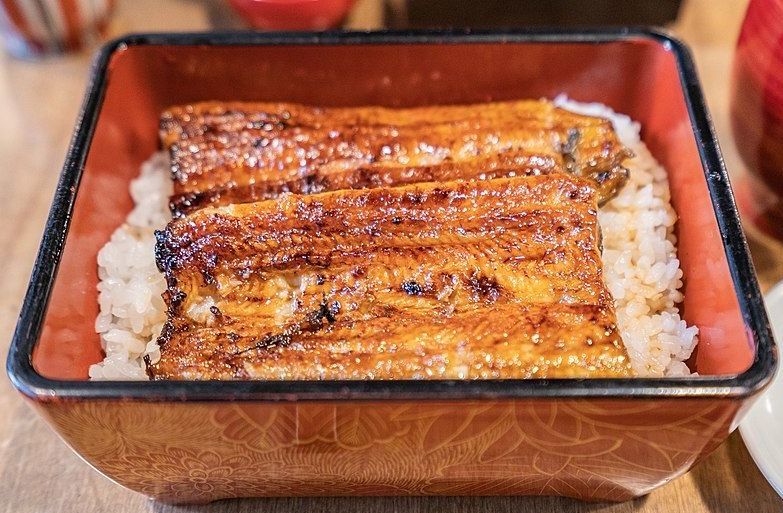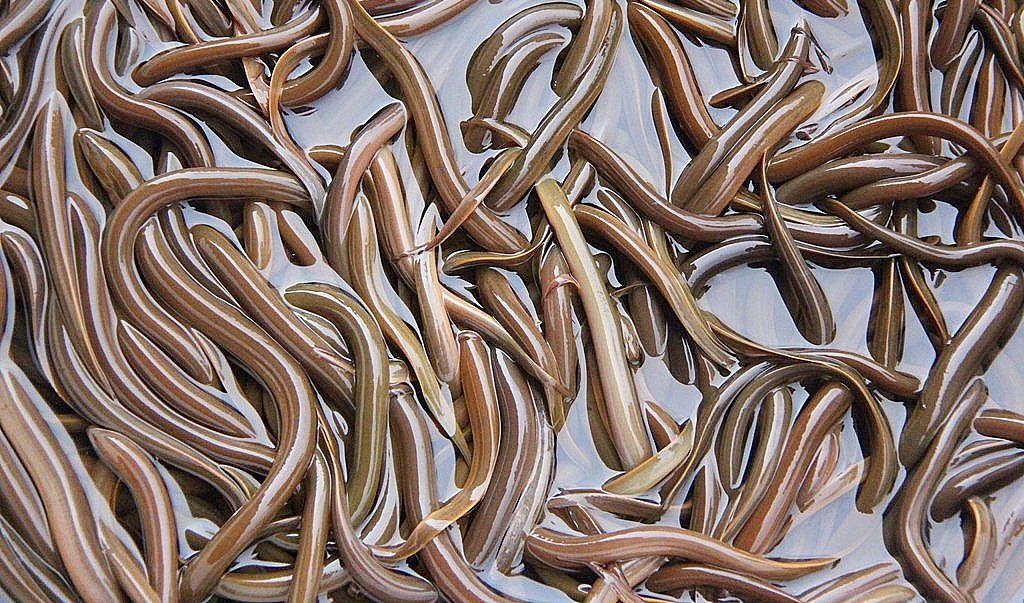Why is Unagi (Japanese Eel) So Expensive?
Japanese eel's elevated price is attributed to its sophisticated farming practices, artisanal preparation techniques, and growing demand amid constrained supply.

What Is Japanese Eel?
The Japanese eel, known scientifically as Anguilla japonica, thrives in regions spanning from Japan to Korea, Taiwan, China, and Vietnam, even reaching parts of the northern Philippines.
It's part of the Anguilla genus, which consists of three species that share striking similarities, suggesting a shared evolutionary origin.
The Japanese eels have a distinct catadromous life cycle, spawning in the salty expanses of the ocean, yet choosing freshwater regions to inhabit for a major part of their lives.
Within Japan's commercial seafood market, these eels have carved out a prime spot, making up a whopping 95% of the eel market.
The Golden Worth of Glass Eels
Adding to the eel's exclusivity is its price point, rivaling even that of precious materials. A single kilogram of baby eels, known as glass eels, can fetch a staggering $32,650 in 2018.
This places it above the much-coveted bluefin tuna. However, acquiring these eels is merely the beginning of a laborious journey. They require an entire year of nurturing before they attain a size fit for sale.
How Much Does Unagi Cost in Tokyo Restaurant?

Unajū refers to kabayaki served atop rice in a decorative lacquer box. The price can reach as high as $90 and Unadon, refers to dish has a base of steamed white rice topped with slices of eel(unagi), averagely priced at $50.
The prices largely influenced by the cost of mature eels. While eels are a staple in Japan throughout the year, their demand surges during the summer months.
Unagi boasts a subtle, sweet taste that's easily enjoyed. Its tender and slightly spongy meat is perfect for absorbing sauces, ensuring every bite is succulent and rich in flavor.
When paired with shoyu and a hint of wasabi, the taste becomes even more enhanced, elevating the dining experience to new heights.
So Why Is Eel So Expensive?

Eel Farming: An Expensive and Risky Venture
Most of the eels we consume are farm-raised and not captured as mature specimens.
This is because, interestingly, eel farming is reliant on the capture of glass eels from the wild, as breeding them in captivity has proven inefficient. This makes the success of an eel farm heavily contingent on the catch of these young eels.
Caring for the eels, especially feeding them, is the most significant expense after their initial acquisition.
They are fed a specialized mixture of fish meal, wheat flour, soybeans, cake, and fish oil twice daily. Distributing this feed uniformly to all the young eels is crucial.
A single error in pond management could endanger the whole group. These eels thrive best in clean, airy environments to prevent diseases.
"Yamada Suisan" in Kagoshima is notable in this realm, capable of producing up to 1000 tonnes annually over its five farms.
Their dedicated staff ensures meals are freshly made at specific hours, 4 am and 3.15 pm, to keep the feed fresh and appetizing for the eels.
Eel Harvesting: A Delicate Process
After in between 6 - 12 months of careful nurturing, the eels reach the harvesting stage.
The process begins with strategically placed nets that guide the eels to a pond corner. Here, a hose, attached to a pump, transports them into a sorting facility.
Expert hands then classify the eels based on weight, averaging around 200 grams per eel.
Smaller eels find their way back to the pond from a designated basket, ensuring they grow to the desired size.
Those meeting weight criteria are gently iced, a method acting both as a humane sedative and a preservation technique. This natural anesthetic ensures the eels remain in optimal condition en route to culinary destinations.
High Market Demand: The Eel's Esteemed Legacy in Japan
The legacy of eel in Japanese cuisine stretches back centuries.
Historical records indicate that the Japanese were savoring the unagi undergoes a time-honored preparation known as kabayaki, a culinary tradition tracing back to the Genroku period (1688 – 1704).
Throughout these years, chefs perfected the intricate technique of filleting, skewering, and broiling the eel, then enriching it with a signature sweet glaze.
This preparation method has withstood the test of time, maintaining its original essence.
Beyond their delectable taste, eels have long been treasured for the vital nourishment and energy they offer.
With establishments like Surugaya, Nodaiwa or Irokawa has been one of the most popular Unagi restaurants in Tokyo delighting patrons with eel dishes for 150-200 years.
Such is the nation's passion for this dish that restaurants can consume up to 40 to 50 tons of eel each year, underscoring its enduring demand and status as a favorite among many.
This enduring appeal is a driving factor behind the steep price tag on young eels. Kabayaki, a traditional broiled eel preparation, is emblematic of Japan's rich culinary heritage.
However, the surging demand for glass eels, sought after across various Asian nations, has catapulted this trade into one of the most significant wildlife trafficking activities globally.
Challenges Facing the Eel Population
Regrettably, wild eel populations are plummeting, not just from overfishing, but also due to pollution, poaching, and illicit international trafficking.
The magnitude of the decline can be gauged by the startling fact that since 1980, the global eel catch has nosedived by more than 75%. This dramatic drop has inevitably driven prices upwards.
Mastering the Art of Eel Grilling
Crafting the perfect kabayaki isn't just cooking; it's an art. The seemingly simple dish has layers of complexity behind its preparation.
Freshness is paramount, so the eel is prepared alive, a challenging endeavor. Expert hands are needed to skillfully debone and size each piece for skewering.
Throughout the grilling process, the eel demands unwavering attention to achieve its desired texture - a delicate balance between firmness and tenderness.
The chef's routine is methodical: first steaming the eel, followed by grilling, saucing by lavishly basting it with a mixture of soy sauce and mirin rice wine. , and two more rounds of grilling.
Beyond the taste, visual appeal is equally important. When served, the dish should captivate both the eyes and taste buds.
A saying in the unagi culinary world underscores this dedication: three years to master skewering, eight for filleting, and a lifetime to perfect grilling.
How Japan Savors its Eel

Eel offers a culinary adventure with several traditional preparations in Japan. While there are myriad ways to enjoy eel, here are some of the most cherished:
Kabayaki: Often considered the foundation for many Unagi dishes, this method involves grilling the eel using Binchotan charcoal and then basting it with a rich, sweet, and savory sauce called "Tare."
Slow-cooking it over intense heat bestows the eel with a rich fragrance. This process results in a crispy exterior, while ensuring the inside remains succulent and flavorful.
Una-ju: Elevate the Kabayaki experience by serving the grilled, sauced eel atop a bed of rice, traditionally presented in an ornate lacquer bento box.
Una-don: Similar to Una-ju, this dish showcases the Kabayaki eel over rice, but it's served in a deep bowl instead of a box.Traditional accompaniments for unagi don in Japan are pickled ginger, wasabi, and soy sauce.
Shirayaki: For those who prefer a simpler taste, Shirayaki offers eel that's grilled to perfection without the signature “Tare” sauce.


